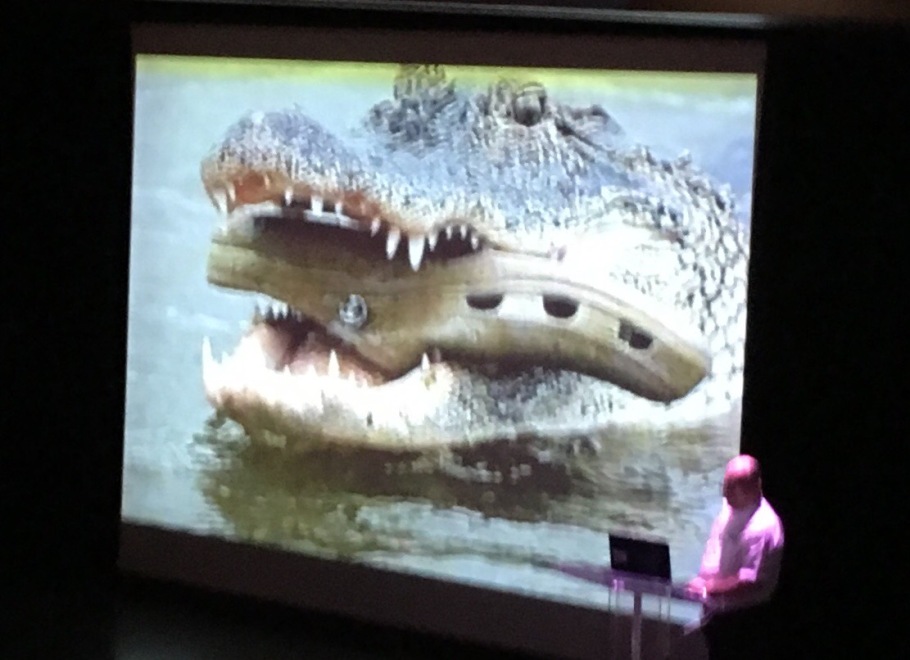Charting a Course through the Great Barrier Reef
Day 50, Grand Asia 2017
Monday, Nov. 20, 2017 – At Sea
After leaving Darwin on the “top end” of Australia, we sailed due east for more than a day and then turned generally south, charting a course down the northeast coast of Australia. It is taking us six sailing days to reach Sydney, in addition to the two days split between docking in Cairns and Brisbane. Virtually this entire trip to Brisbane is within the Great Barrier Reef.
Today passengers packed the two-story Queens Lounge showroom for a presentation by Capt. Glenn Robinson, the Australian reef pilot who joined us in Darwin. He is generally responsible for the navigational route of the Amsterdam through the Great Barrier Reef. (I’m not referring to the specific legal authority split between a pilot and ship’s captain, but speaking in general terms here.)
The Great Barrier Reef is in the Coral Sea off the coast of Queensland, Australia. It is 1,400 miles long and comprises more than 2,900 reefs and 900 islands. It is one of the seven natural wonders of the world and is the only living organism visible from outer space.
The Great Barrier Reef Marine Park Authority requires certain types of vessels to have a reef pilot aboard in specific areas of navigation between reefs. The Exxon Valdez incident in Alaska led to the requirement. About 80 pilots guide 5,200 ships a year through the Great Barrier Reef area.
Marked channels between reefs allow access to port cities, and there are areas that are too shallow for certain types of vessels. In some cases, a large cargo ship might only have a meter (about 39 inches) of depth under its keel. Capt. Robinson showed us photos of ships that didn’t follow the navigational paths and went aground, damaging the reefs and sometimes causing spills.
Reef pilots also are responsible for pollution control, ensuring that vessels don’t discharge or otherwise contaminate the reefs. While global warming is probably the best-known threat to the reef, fertilizer runoff and other kinds of pollution also are significant dangers.
Cruise ships are a growing business in Australia. The country recently surpassed the United States in the per capita of population who cruises (3.5 percent for Australia; 3.3 percent for the US). In 2016, 38 cruise ships docked in Cairns. This year there will be 75.
It is no surprise that reef pilots find cruise ships to be plum assignments. Cruise ships stop frequently in ports so they can board and disembark at a pier. Other times they must either helicopter to a ship or step from a pilot boat to a rope ladder and climb many meters to the deck.
Of course, cruise ship food and accommodations are wonderful. Capt. Robinson said on some commercial vessels he brings his own food rather than eat something totally unfamiliar and perhaps not up to his expected sanitary conditions.
Capt. Robinson obviously enjoyed sharing his experiences and knowledge of the reef. He included slides showing the various fish and coral that visitors encounter on the reef and ended his presentation with a slide showing a croc in a crocodile.

